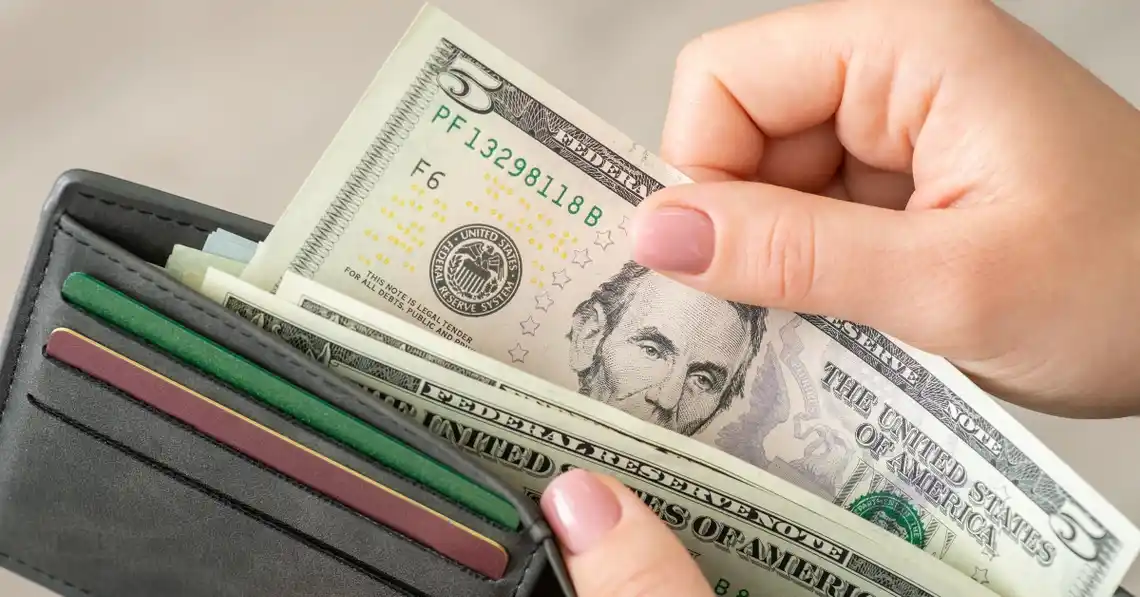Rare $5 Bill Misprints and star notes are two ways to identify a valuable $5 bill. Like most currency options, $5 isn’t always worth $5. While most $5 bills are worth exactly their face value, the price of some bills can vary significantly, as some bills have unique and recognizable features that make them more valuable to collectors.
These rare bills can be hard to spot in a pile of other bills, but once you do, they’re totally worth it because you can earn extra income by selling them directly to collectors.
Here are 10 signs that your $5 bill is worth more than it was printed for.
Your bill has a patterned serial number Rare $5 Bill
Check for patterns in the serial numbers on your $5 bills and see if you can make some money off of them. Notes with unique serial numbers, such as those with a repeating pattern like “111111,” are very popular. Solid serial numbers—or those with the same number written on them—are often worth thousands of dollars to currency collectors.
Palindrome numbers—or numbers that look the same from left to right and right to left—are often more valuable than the $5 bill printed on them. A Binary Radar Repeater palindrome printed in 2006 is currently selling for $110 on eBay.
Your bill has a low serial number
A low serial number—such as “000001”—indicates that your $5 note was one of the first notes printed in that issue. Collectors often pay more for these than the current value of $5, even if it’s not much more expensive.
Notes with lower serial numbers in each series are more valuable to collectors than notes with higher serial numbers. This is true even for recently printed notes. Notes with serial numbers below 100 or 1,000 can be worth anywhere from $10 to $300, depending on the condition of the note.
There is a printing error or mistake
Due to their rarity, notes with printing errors, such as a lack of ink, double printing, or incorrect design, can be quite valuable. A 1988 note can be worth $4,000 because technically there should be an ink mark in the lower right corner of the back of the note.
Notes with a misprint are usually removed from circulation and replaced with a note with a star. This is why the notes currently on the market are extremely rare and worth a lot of money. A representative from Palm Island Coins, a Florida collectors organization, explains, “They are perfectly legal to own and have become a wonderful part of the paper collecting hobby.”
There’s a star on your bill
Star notes, which are issued by the Bureau of Engraving and Printing to replace notes damaged during printing, are often considered more valuable. This is especially true if the bill is from an older year or is in good condition. You can identify a star note by looking at the serial number. A small, five-pointed star will appear just before or after the serial number.
A rare star note from the 2017A series that’s in used condition is currently available on eBay for $1,200, but similar notes have recently sold for around $30.
A rare bank issued your note
If your note was printed or issued by a small bank or an institution that no longer exists, it may be worth more than other versions of the same note. This applies to all types of currency that are of interest to collectors.
In 1929, the First National Bank of Aransas Pass, Texas, printed a $5 note that was never put into circulation. It recently sold for $3,360.
You have identified an 1890 Treasury Note.
The 1890 Treasury Note is one of the earliest large notes and is considered extremely rare. Although 300,000 of these notes were initially printed, only 14 survive today. You can recognize it by the fun, almost circus-like, dark green design on the back.
Due to its age and extremely large size compared to other U.S. notes, this note sold at auction in 2013 for $282,000. One note is listed on eBay for $35,000, while others are priced at $8,000 or less.
You have an 1861 Demand Note
Demand notes were the first paper notes issued by the U.S. government. You can easily identify them by looking for the green circle with the five digits on the back of the note. A note with “for the” printed on it sold for $138,000 in 2007, and a copy of the 1861 St. Louis Demand Note was auctioned for $81,000 in 2018.
These $5 notes were in circulation during a specific period – August 1861 to August 1862 – as a means for the military and other U.S. officials to pay for government expenses of the war. Soldiers were reimbursed for their time and efforts through these notes, originally “IOUs” – or checks – that allowed you to receive payment in gold at Treasury facilities.
You’ll find 1934 $5 silver certificates and Federal Reserve notes.
In 1934, the United States Treasury seal was moved to the right side of the $5 silver certificate. This was the same year these were resized to resemble the current $1 and $10 notes.
If you have a 1934 Hawaiian $5 note with a brown seal, it could be worth up to $6,000. A 1934 North African version with a yellow seal could sell for $1,850.
Summary
Although currently printed $5 notes have a light purple and brown background and contain a security thread, they haven’t always been identified as such. You may not know the difference between valuable and misprinted notes, but a quick online search will help you identify notes that may be worth more.
